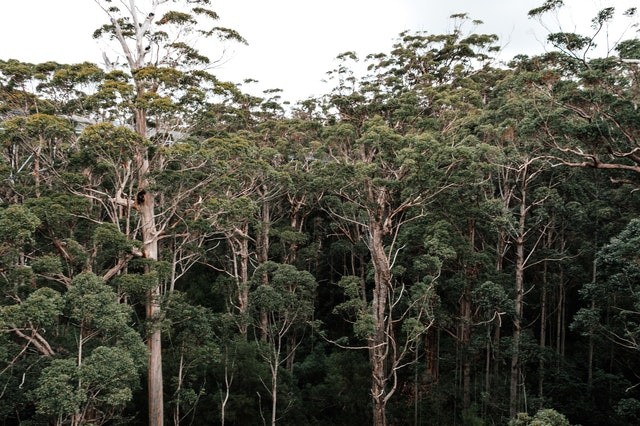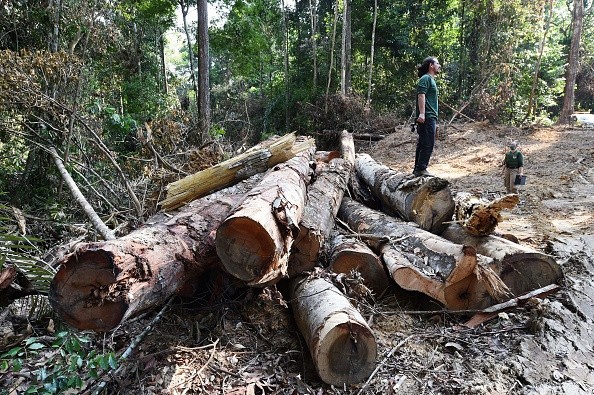A new research published today reveals that tropical forests may recover with astonishing speed.

Forest Recovery

According to an international consortium of researchers, tropical forests can nearly totally recover if they are left alone by people for roughly 20 years. This is due to a multifaceted mechanism in which ancient forest flora and animals assist in the growth of a new generation of forest - a natural process known as "secondary succession."
These new findings, published in Science, might help mitigate climate change and give meaningful advice on what to do next. They also imply that it is not too late to reverse the harm caused by humanity's disastrous climate change in recent decades.
"That's good news," said Lourens Poorter, a professor of functional ecology at Wageningen University in the Netherlands and the paper's lead author. "The implication is that, in 20 years... that's a realistic time that I can think of, that my daughter can think of, and that policymakers can think of."
Natural Regeneration
Natural regeneration is often overlooked in favor of tree plantations. However, Poorter claims that the former produces greater benefits than restoration plants. "It performs far better in terms of biodiversity, climate change mitigation, and nutrient recovery as compared to planting new trees."
According to Poorter, the key message is that we don't need to plant additional trees when nature is already doing so.
Related Article : "Violating Nature's Right"- Ecuadorian Court Votes in Favor of Forests Against Mining Plans
Large-Scale Collaboration
More than 90 experts worldwide joined together for this project to examine how tropical forest restoration occurs. They looked at data from three continents, 77 locations, and 2,275 plots in the Americas and West Africa to see how forests were recovering. They then looked at 12 other factors, including soil, plant function, ecosystem structure and biodiversity, and more. They used a technique called chronosequence to simulate this data, without which they would have had to wait over 100 years to observe this happen in the actual world. This allowed them to infer long-term trends in forest recovery.
The researchers were particularly interested in what happens to tropical forest land that has been utilized for cultivation or farming for a few seasons before being abandoned. They discovered that the old forest, which included some fertile soil, any remaining trees, seed banks, and maybe resprouting stumps, provided a nurturing, linked environment in which new forest might begin to emerge.
"Need Time"
The researchers discovered that some features need more or less time to return to "old forest" levels before being utilized. According to their estimations, the soil takes an average of 10 years to restore to its prior state, plant and animal biodiversity takes 60 years, and overall biomass takes 120 years.
However, after just 20 years, tropical forests may recover 78 percent of their old-growth status. Poorter said, "That's really rapid - astonishingly fast."
Limitations

Of course, these are just calculations. One of the limitations of chronosequence-based analyses is that each location is assumed to have the same history and successional dynamics, according to Eric Salas, a geospatial sciences researcher at Central State University who was not involved in the research. As a result, there may be some misunderstanding.
"However, knowing how secondary forests arise organically on abandoned agricultural areas is crucial for maintaining biodiversity conservation," Salas added, "especially in tropical environments, where forests have a complex structure and a diversified flora and fauna species."
The findings might be essential for future climate mitigation efforts.
"Secondary forests, for example, are like teenagers. "They absorb carbon like crazy and empty your refrigerator," Poorter explained. "When you look at aged individuals, you'll see that they eat very little, just like an old growth forest."
"What we want to encourage is that you cherish those secondary forests and, in locations where you can, let those forests recover naturally," Poorter said. He points out that many of the promises made about planting trees to restore forests worldwide are unrealistic. According to Poorter, 30 percent to 50 percent of those trees die, and they only belong to a few species that can't match the natural diversification of forests.
"My appeal is to exploit natural regrowth where possible and to plant and restore actively where necessary." The method is case-by-case, and it all depends on the local environment as well as the particular demands of the people who live in these areas."
For more environmental news, don't forget to follow Nature World News!
© 2025 NatureWorldNews.com All rights reserved. Do not reproduce without permission.





